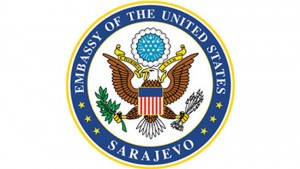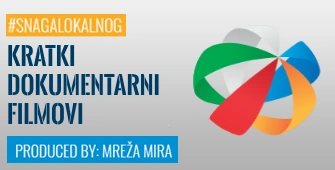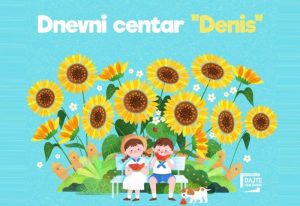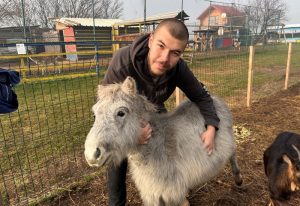Overview:
The goal of the U.S. Embassy’s Cultural Grants Program is to support programs that share the richness and diversity of American culture with the Bosnian public and to promote mutual understanding and cultural dialogue between the United States and Bosnia and Herzegovina. Grants generally range between $1,000 and $15,000 are awarded to non-profit organizations and institutions for artistic and cultural performances, guest speakers/directors/performers, the rights to American works, exhibits, workshops, etc., that further the goals of the program. Grants will be reviewed three times annually – on January 31, April 30, and July 31. Proposals should be submitted 3-6 months before the planned event or activity.
What are we looking for?
- A program component that helps build and enhance relationships between Bosnia and Herzegovina and the United States and/or introduces a new element of American culture to Bosnia and Herzegovina
- A project with strong artistic merit
- An educational component, such as a workshop or master class by a visiting artist
- Projects that benefit a wide group of people or have a plan to amplify the results among the public
Your proposal will also be evaluated on the following:
- Quality of the proposal’s description of how to achieve the stated outcomes
- Concrete and logical budget
- Implementation capacity of applicant
How to apply:
Please download the Cultural Grants application from this page, complete it in English, and submit it to SarajevoOPAGrants@state.gov. Please read the below instructions carefully before completing your application.
See also the additional mandatory application forms described at the end of this page.
Application Instructions for the Cultural Grants application: Please read carefully and complete each question as instructed. Omitting any of the requested information will delay the review of your proposal and may result in it being eliminated from consideration.
- Applicant’s Contact Information:
- Implementing organization: Specify the officially registered name of the organization.
- Contact person and title: Name and the title of the Project Coordinator, or the person who is authorized to sign official documents, if different from the Project Coordinator. You may state the name of the Project Coordinator too or person who is authorized to sign official documents.
- Address/Postal Code and City
- Phone number
- E-mail:Please include both the general email address for your organization and the email address of the project coordinator.
2. Basic Information about the Proposal:
- Project title:
- Amount requested (USD)/Amount of cost share (USD)/Total cost (USD): Please list the amount of funding requested from the Embassy. If there is a cost share (another organization covering part of the total cost of the project), please list the amount here. Please list the total cost of the project which you get when you sum the amount you request from U.S. Embassy and amount of co-share.
- Elevator pitch: In 50 words or less, describe what your project is designed to accomplish and why it should receive support from the U.S. Embassy.
- Definition of situation: Clearly identify the problem your project will address. Please explain what causes the problem, and what aspect of this cause you are addressing.
- Project outcomes: Please explain how you want to solve this problem by explaining the outcomes of your project. Outcome is defined as the impact or change in a participant’s knowledge, skills and/or attitudes as well as the longer-term impact on their communities.
- Description of project activities: Explain the activities you plan to implement as part of the project in order to reach the outcome.
- Activity locations: List the cities/towns/communities where the project activities will take place.
- American Cultural Component: Please explain how the project activities brings American culture to people in BiH.
- Target audience:Describe the anticipated beneficiaries of your project, including estimated number and age range.
- Project schedule and time: Note your project duration in months and give an overview of the schedule. If you have a specific timeframe, please list the dates and explain why your project must take place within that timeframe.
- Key personnel: List the names, titles and roles of key personnel involved in the project, including organization staff and any experts or trainers you will engage to implement the project. Give a brief overview (1-2 sentences) of their experience/qualifications. What proportion of their time will be used in support of your project?
- Project partners: If you are implementing your project jointly with any other organizations, please list the names and type of involvement of those partner organizations. A partner organization is an organization with which you work to develop and implement the project. Partner organizations also need to obtain DUNS numbers. Please note: contractors you engage to deliver goods or services such as trainers, web developers or suppliers are NOT partner organizations.
- Anticipated outputs of the project: Output is defined as direct and tangible results of the project activities (number of people trained, number of public advocacy campaigns conducted, number of media articles or social media posts promoting U.S. Embassy priorities, etc.).
- Background of implementing organization: Briefly explain the mission of the organization, date of registration, number of employees, their work experience, number of volunteers, past and current programs implemented, as well as its technical and management capacity. Please briefly explain what internal control procedures you have put in place to manage grant funds.
- Previous U.S. Government funding: Indicate whether the implementing organization has received previous funding from the U.S. Government. If so, please state the name of the project, the year and the amount of funding for each project.
- Detailed budget: Present the budget in the form of a spreadsheet, in USD amounts, dividing the budget into the categories delineated in the application. Ensure that your stated project activities are properly budgeted based on reasonable market price for personnel, fringe, travel, contractual services, supplies, and other direct costs. The ratio between administrative costs (personnel, fringe and other direct costs) and program costs (travel, supplies and contractual) will have impact to project evaluation. Cost sharing is not required. However, the Recipient may present cost-sharing on voluntary basis including in-kind contributions. The absence of cost sharing will not in any way impact evaluation of the project. However, if the Recipient includes cost sharing in the project proposal, then the Recipient is accountable for providing it. In the event the Recipient does not provide the minimum amount of cost-sharing as stipulated in the Recipient’s approved budget, the government contribution may be reduced in kind.
- Budget narrative: Please explain your budget in narrative form, detail personnel duties, list names of trainers/moderators/experts and project staff and break down travel and lodging costs (i.e., how many people, how many overnights, cost per person per day).
Additional Mandatory Forms:
In addition to the Cultural Grants application, your proposal cannot be reviewed without all of the below elements. All forms and instructions are available on our web site, under Grant Opportunities.
For individuals:
- SF424A (Budget Information for Non-Construction programs)
- SF-424B (Assurance for Non-Construction programs) is required only for those applicants who who registered in SAM.gov before February 2, 2019
For organizations:
- SF-424 (Application for Federal Assistance – organizations). Please make sure to include your DUNS number in the application.
- SF424A (Budget Information for Non-Construction programs)
- SF-424B (Assurance for Non-Construction programs) is required only for those applicants who registered in SAM.gov before February 2, 2019
- Project Application (6 pages maximum): The proposal should contain sufficient information that anyone not familiar with it would understand exactly what the applicant wants to do.
- DUNS Number (to be included on the SF–424 application)
- Screenshot of your SAM registration or a printout of your registration document from the SAM.gov web page.
**Please note: Obtaining the DUNS number and registering in the SAM system can take up to one month. We strongly encourage you to start this process as soon as possible, since we cannot review any projects that do not include DUNS numbers and completed SAM.gov registrations.**
How to Apply for Required Registrations
- Who must apply?
All organizations applying for grants (except individuals) must obtain these registrations. All are free of charge:
- Unique entity identifier from Dun & Bradstreet (DUNS number)
- NCAGE/CAGE code
- SAM registration
- Note: individuals are exempted from the DUNS and SAM.gov registration requirements. Simply enter 123456787 into the DUNS field in the SF-424 form.
- First, get your DUNS Number
To get a DUNS number please go to the Dun and Bradstreet website. Please allow ample time as the process can take up to thirty days.
- Next, get your NCAGE/CAGE code
- To apply, go to CAGE/NCAGE Code Request page
- Instructions for the NCAGE application process are available here.
- For NCAGE help from outside the U.S., call 1-269-961-7766
- Email: NCAGE@dlis.dla.mil for any problems in getting an NCAGE code.
- After you receive your NCAGE code, complete your SAM.gov registration
- To register in the SAM system, go to their web site.
- Please read the quick guide for grants registration attachment which is the part of the application package that is posted on the Embassy web site.
- SAM registration must be renewed annually, so even if you are already registered in SAM from a previous grant, please check to see if your registration is still valid.
Cultural Grants Program – U.S. Embassy in Bosnia and Herzegovina (usembassy.gov)





